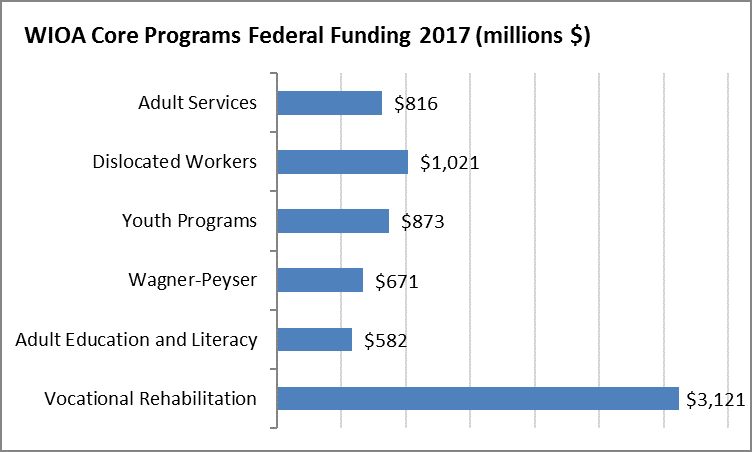.jpg?h=d86469f3&itok=MPgdxsU_)
What are federal sources of workforce funding? These are funds that the federal government provides through many different departments and agencies to support workforce development activities. Each of the funding streams has a specific focus and eligibility criteria.
How are federal funds awarded? Many federal funds are allocated through formula grants to states—mandatory, noncompetitive grants awarded based on specific factors such as the unemployment rate, the share of disadvantaged adults or youth, or other factors. States then distribute this funding to local areas. In contrast, discretionary grants are funding awarded competitively for states or local organizations.
What are these federal funds used for? Under the Workforce Innovation and Opportunity Act of 2014 (WIOA), the federal government distributes funding to states for six core programs, including the US Department of Labor's Adult Services, Dislocated Workers, and Youth Services programs (for employment and training activities), Wagner-Peyser programs (employment services for job seekers), and the US Department of Education’s Division of Adult Education and Literacy (for basic skills) and its rehabilitation services programs (for employment services for individuals with disabilities). In 2017, the federal government distributed over $7 billion in funding under WIOA.

Other federal workforce funding streams include the following:
- The Department of Labor funds multiple employment and training programs focused on senior citizens (Senior Community Service Employment Program), migrant and seasonal workers, trade adjustment assistance, apprenticeships, Native Americans, young adults (Job Corps and YouthBuild), veterans, skilled immigrants (H1B TechHire), and others. Funding for these programs totaled over $1.5 billion in 2017.
- The Pell grant program provides direct assistance to students based on financial need for postsecondary studies in occupational or academic programs. Students in nondegree certificate programs are included as long as the programs meet certain criteria, including leading to “gainful employment” and requiring a certain number of hours. This program provided $26.9 billion to students in 2017.
- Federal funding to promote work and support mandatory work requirements for some program beneficiaries is part of the Temporary Assistance for Needy Families program and the Supplemental Nutrition Assistance Program's Employment and Training Program.
- The Carl D. Perkins Career and Technical Education Improvement Act provides funding ($1.2 billion in 2017) for high school and college career and technical education programs that combine academic studies with occupational training.